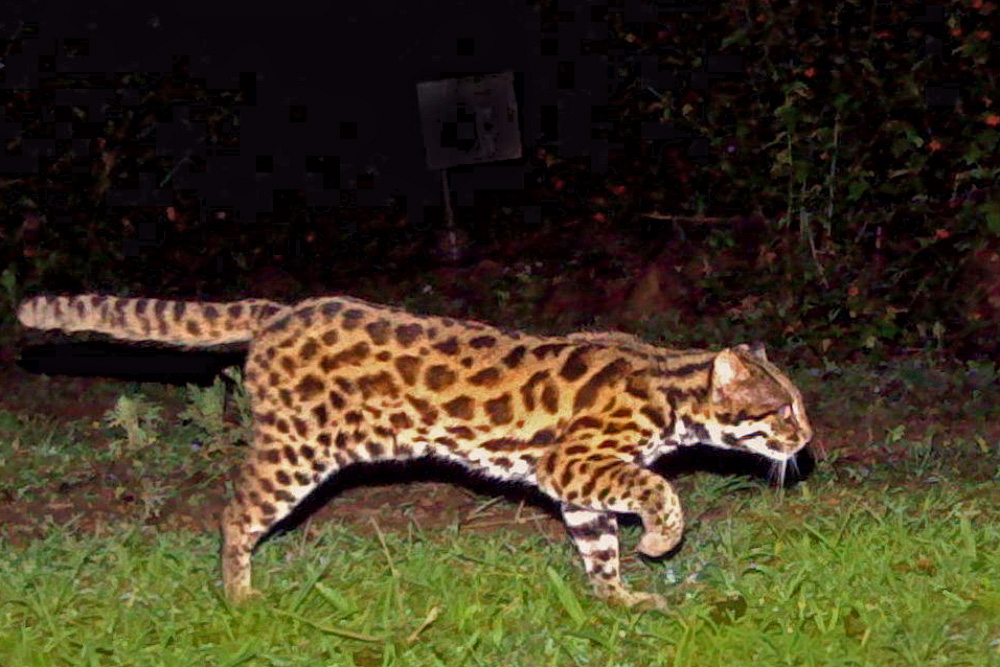
Small felids, like jungle cats, leopard cats, fishing cats and marbled cats (among others) constitute more than 60% of all cat species in the world. But most of these small cats remain understudied because they are generally secretive, elusive and difficult to observe and monitor. In this aspect, the leopard cat presents a fascinating case study.
Leopard cats are among the world’s most widely occurring small cat species. There have been substantial studies of their ecology in Southeast Asia. In India, they are the second most abundant small felids, after the jungle cat. Some researchers speculate that there may be two sub-populations of leopard cats in India; one in the northern and northeastern part of the country, and second in the Western Ghats. Yet, there is scant ecological knowledge on their populations in the country.
In a new study, researchers from Wildlife Conservation Society, India Program assessed population densities of the leopard cat across four tiger reserves in the Western Ghats. The study relied on photographs from camera-trap surveys, and, identification of individual leopard cats based on their unique pelage patterns. Using advanced spatial capture-recapture methods, leopard cat densities were estimated at around 10 cats per 100 sq. km in Bhadra Tiger Reserve and at around 5 cats per 100 sq. km in BRT Tiger Reserve. Sparse photo-captures of leopard cats from Nagarahole and Bandipur reserves indicated low underlying densities in these two areas.
Leopard cat densities were highest in Bhadra, followed by BRT and least in Nagarahole and Bandipur, possibly influenced by a rainfall gradient. Within Bhadra, high spatial densities of leopard cats were in secondary forests and coffee plantations outside the reserve boundary, and village-relocated sites within the reserve. In BRT, they were found closer to human settlements. This is interesting, since these areas also tend to have greater populations of rodents; presence of leopard cats could therefore benefit people by keeping a check on rodent populations. Overall, the central Western Ghats seem to support a thriving leopard cat population, with over 100 individuals estimated from the four reserves. The current assessment, which is the first large-scale population study of leopard cats in India, also indicates that habitat mosaics of protected forests, unprotected reserve forests, and coffee plantations are important for their conservation. Therefore, major land-use changes like mines, roads and dams in the Western Ghats could be detrimental to their populations.
Combined with continuous population monitoring, studies such as this one will aid in scientific reassessment of the leopard cat’s conservation status, which is currently categorized as ‘least concern’ in the IUCN Red List. With poaching, habitat loss and illegal pet trade threatening their survival, there is need for extensive and targeted assessments of leopard cat populations across their distribution range.
Citation: Srivathsa, A., Parameshwaran, R., Sharma, S., Karanth, K.U. (2015). Estimating population sizes of leopard cats in the Western Ghats using camera surveys. Journal of Mammalogy. doi: 10.1093/jmammal/gyv079

 CI is a non-profit, non-commercial portal that aims to facilitate wildlife and nature conservation by providing reliable information and the tools needed to campaign effectively.
CI is a non-profit, non-commercial portal that aims to facilitate wildlife and nature conservation by providing reliable information and the tools needed to campaign effectively.